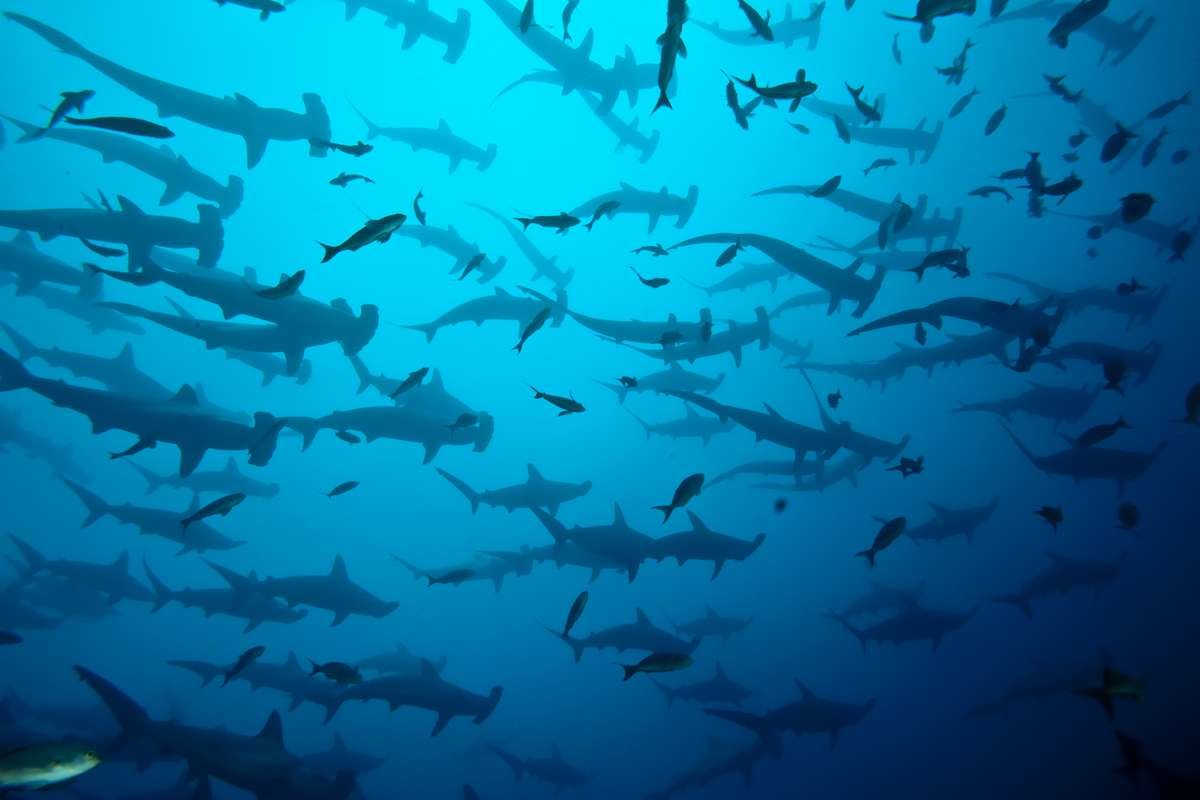
A 500,000 sq km fishing-free corridor ‘superhighway’ will protect some of the richest waters in the world around the Galápagos Islands and cover key migratory routes for endangered sharks, sea turtles, whales and rays.
The governments of Panama, Ecuador, Columbia and Costa Rica announced a joint commitment to extend existing protection zones around key sites such as the Galápagos and Cocos to provide safe corridors across the region and to halt the devasting impact of industrial fishing fleets preying on species moving between the seamounts of the Eastern Tropical Pacific.
Columbian president Iván Duque, announced an additional 160,000 sq km of marine protected area on top of the country’s existing 120,000 sq km at the COP26 Glasgow climate conference.
Ecuador’s president, Guillermo Lasso, also declared the expansion of the current 133,000 sq km Galápagos marine reserve by 60,000 sq km.
Conservationists have been calling wide-ranging protection as increasingly species such as scalloped hammerhead, whale sharks and manta rays migrating across the vast stretches of open ocean between the isolated seamounts in the area are being targeted by fishing fleets.

The new protected zone will be split into two: a no-take zone of 30,000 sq km to the northeast of the Galápagos Islands connecting Ecuador’s waters with those of Costa Rica, along the underwater seamounts of the Cocos Ridge, a key migration route for ocean-going species. Another 30,000 sq km area will be a no-longline fishing zone wrapping north-west around the existing Galápagos marine reserve.
Alex Hearn, a British marine biologist who has worked in the Galápagos Islands for two decades, said: ‘This is a moment to relish, but there’s a lot of work which needs to be done.’
Hearn said the Eastern Tropical Pacific was ‘one of the last bastions of what ocean biodiversity would look like in a pristine world’, and described the seas that connect the Galápagos, Malpelo, Cocos and Coiba islands as a living laboratory for scientific research.
‘Just protecting the waters around them is not enough. There’s a connectivity between the areas and that’s what we need to protect,’ he said.
Hearn said that the populations of highly migratory species had been falling this century, among them turtles, rays and sharks, particularly the critically endangered hammerhead species that congregate to breed around the Galápagos’s Darwin and Colombia’s Malpelo islands.
The region attracts large industrial fishing fleets, including shark-finning vessels, many from China. Galápagos Conservancy said it believed the protected zone, if properly policed, could allow sharks there to ‘begin to rebound’.
‘Although conservation work is never done, today we can celebrate a major victory for Galápagos and for our planet,’ a spokesperson for the organisation added.


